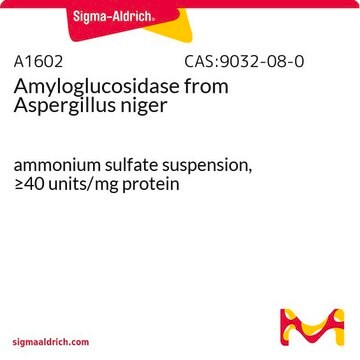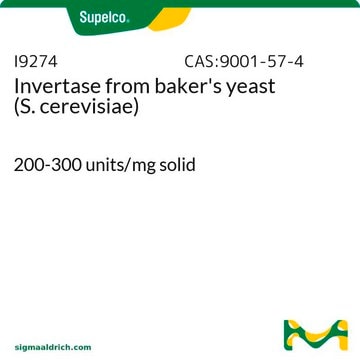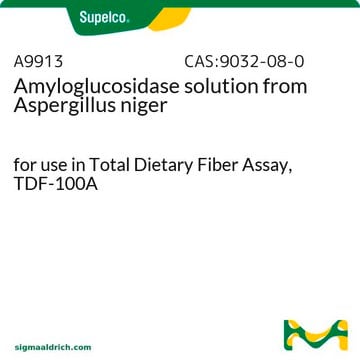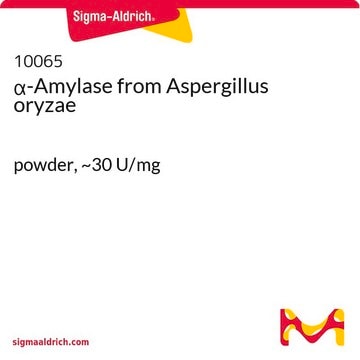ROAMYGLL
Roche
Amyloglucosidase
from Aspergillus niger
Synonym(s):
Aspergillus niger, disaccharidase-type a-glucosidase
About This Item
Recommended Products
biological source
Aspergillus niger
Quality Level
form
lyophilized
specific activity
6 U/mg (approximately 6 U/mg lyophilizate at +25°C with glycogen as the substrate)
~6 units/mg protein (At 25 °C with glycogen as the substrate.)
mol wt
97 kDa
packaging
pkg of 3,500 U (11202367001)
pkg of 500 U (11202332001)
manufacturer/tradename
Roche
optimum pH
4.6-4.8
storage temp.
2-8°C
General description
Specificity
Application
Biochem/physiol Actions
Preparation Note
The following concentrations should be taken as a guideline:
- Western blot: 1 to 10 μg/ml
Working solution: Tris-buffered saline containing 0.1% Tween 20.
Storage conditions (working solution): 2 to 8 °C
Other Notes
Signal Word
Danger
Hazard Statements
Precautionary Statements
Hazard Classifications
Resp. Sens. 1
Storage Class Code
11 - Combustible Solids
WGK
WGK 1
Flash Point(F)
does not flash
Flash Point(C)
does not flash
Certificates of Analysis (COA)
Search for Certificates of Analysis (COA) by entering the products Lot/Batch Number. Lot and Batch Numbers can be found on a product’s label following the words ‘Lot’ or ‘Batch’.
Already Own This Product?
Find documentation for the products that you have recently purchased in the Document Library.
Customers Also Viewed
Our team of scientists has experience in all areas of research including Life Science, Material Science, Chemical Synthesis, Chromatography, Analytical and many others.
Contact Technical Service











